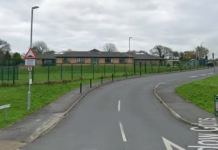AT the launch of Carmarthen Castle’s Castle and Princes project, director of Dyfed Archaeological Trust, Ken Murphy said it was impossible to overstress the importance of Carmarthen in the history of Wales.
The project was launched on October 1, 2014, in the shadow of the castle walls.
Mr Murphy said: “Carmarthen had been at the centre of culture, commerce and government in south Wales for more than 2000 years.
“And for more than 900 years Carmarthen Castle has been at the town’s heart, as a Royal Castle, a goal, police station and as a seat of local government.”
He said the castle was something of an anomaly having been conceived and built as an English Royal Castle by Henry 1 in the early twelfth century.
“Not only did it serve as a springboard for the Norman invasion of Wales. But also acted as a reminder to the Norman lords that the English King was in command of them, should their ambition outstrip their status.
“Like all castles in Wales, Carmarthen changes hands many times during the twelfth and thirteen centuries, falling under the control of Welsh princes, Norman lords and the English Crown.
“During these tumultuous times the town of Carmarthen developed to become the most populous and important in Wales, a record it held until the industrial revolution and the rise of such places as Llanelli, Swansea and Cardiff.”
However, the medieval town of Carmarthen had not fared well, said Mr Murphy. The Friary – once considered the most beautiful building in Wales – now lies under Wilkinson’s car park. The Priory, for several centuries a centre of Welsh scholarship and learning is covered with allotments and no trace remains of the town walls that once enclosed the town.
Mr Murphy went on: “The castle has survived remarkably well when its history is considered.
“Abandoned by the sixteeth century, the castle was reused by the military during the Civil War, only to be slighted in 1650 makings its military re-use impossible. Surviving buildings were then used as a goal.
“In the eighteenth century an entirely new goal was built. This was largely removed to make way for a large goal in the 1860’s, which was in turn demolished in the 1930’s to make way for the current county hall.
“But the castle did survive and in a much better state than anyone would have been aware until fairly recently.
“Shops were demolished on Knott Square in the early 1980’s revealing views of the Gatehouse for the first time in several centuries.
“Houses were also removed later on Bridge Street revealing the curtain wall and towers.
“We have to thank several offierts of Carmarthenshire council for their hard work and foresight in both preserving these views and obtaining grant money and other funds to enable large scale conservation and improvement of the castle in the 1990’s and early years of this century.
“This launch is about another chapter in the glorious history of Carmarthen Castle and anyone who visits will hear that the interpretation can speak for itself.”
*Carmarthen Castle by Neil Ludlow, formerly of Dyfed Archaeological Trust, is published by the University of Wales Press funded by Carmarthenshire council. It is available in English and Welsh.

| [donate]
| Help keep news FREE for our readersSupporting your local community newspaper/online news outlet is crucial now more than ever. If you believe in independent journalism,then consider making a valuable contribution by making a one-time or monthly donation. We operate in rural areas where providing unbiased news can be challenging. |
















